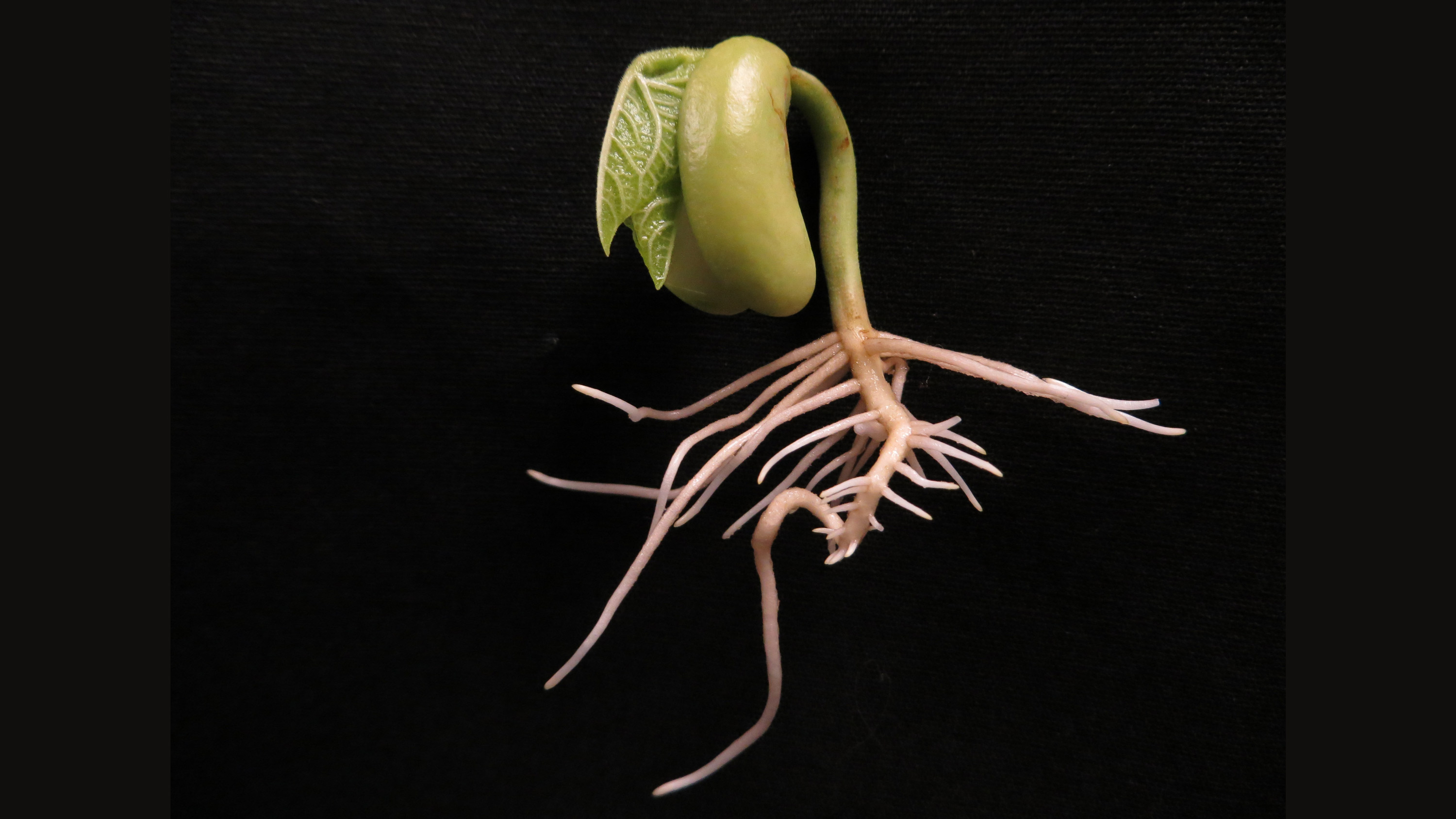
Have you ever seen how a bean grows up?
“From Seed to Seed, A Pictorial Story Showing How a Bean Plant Grows” is the newest publication from the University of Nebraska–Lincoln’s Plant and Soil Sciences eLibrary. It is an online picture book showing the day-by-day story of how a red kidney bean grows up, flowers and produces one of the staples in the diet of many peoples in many countries.
This free e-book contains over 100 stunning photographs depicting the bean from its normal size all the way down to the minute details in scanning electron micrographs. The authors include line illustrations, clear labels identifying the distinguishing parts in each photograph and captions explaining the figures.
Geared for high school students, undergraduate students, and their teachers plus anyone who wishes to see and learn about bean anatomy and growth, this book is the first to depict comprehensive detailed bean plant morphology and anatomy in one place. The book has three parts. The first part focuses on the easily visual stages of vegetative growth. The second part examines via microscopy the internal cell structure and reproductive phase of the plant. Part three provides all the information needed to grow your own bean plants.
“From Seed to Seed” is the brainchild of Department of Agronomy and Horticulture scientists Ellen Paparozzi, professor emerita, Elizabeth Conley, retired research technologist, and Christian Elowsky, assistant professor of practice. The authors have more than 100 years of combined experience working with and teaching about plants.
“My observation of how students have changed over 40 years is that they are lot more visual now,” Paparozzi said. “Everything is pictures and visual stimulation like games. I figured what better way to make this book than pretty pictures.”
The project started when Paparozzi, who has studied beans her entire career, wanted to put the beauty she had seen over the years into some accessible form. Conley began growing the beans in the lab which they then photographed at each stage of development. It took 14 experiments, each for 80 days, to capture the details of all the developmental stages.
“What made us excited was on any given morning Ellen would walk into the lab and I would say look at this, we’ve never seen this before, what do we do about this, and should we take a picture of this,” Conley said. “Just watching the buds develop was a fascinating story. I never realized how complicated it is.”
Elowsky became involved in the project when he would stop by the lab, see the variability and unpredictability of the growing beans, and quiz Conley on what was happening with the plants. He then shared this information with his students.
“Plants are very diverse and complicated and because they can’t get up and move, they must adapt to where they are,” Elowsky said. “They survive by variability. That variability is, to me, the most important part of teaching. The hardest thing to teach undergraduates is to really look at a plant and see the differences. If they are looking at something that’s going to do exactly the same thing every time, there is a lot less learning.”
“This book is a capstone project for Liz and me as we finished our long careers at the university,” Paparozzi said. “The real motivation for this book is we love plants, and we love the science behind the plants. And we want to get high school students excited about plants before they come to Nebraska.”
Paparozzi earned a master’s degree and doctoral degree in floriculture and ornamental horticulture from Cornell University. After receiving her doctorate in 1980, she joined Nebraska to help build a horticulture program. Her research goal was a simple one — link basic science with applied science by capitalizing on her experience in plant nutrition, plant anatomy and electron microscopy. Over the years Paparozzi taught 13 different courses at the undergraduate and graduate levels including floral design, applied physiology, floriculture and nursery crop production, and cannabis.
Conley worked as Paparozzi’s technologist for 32 years helping with research as well as teaching students how to manipulate plant growth, how to participate in plant nutrition experiments and analysis, and to learn plant anatomy techniques.
Elowsky was an undergraduate student in Paparozzi’s Introduction to Floriculture class. Later she served on his graduate committee. He completed his bachelor’s degree in horticulture, master’s degree in biology and doctoral degree in natural resources – applied ecology, all at Nebraska. He currently teaches plant science and plant anatomy courses and is coordinator of the plant biology major.
Prior to joining the Department of Agronomy and Horticulture, he worked for the Morrison Microscopy Core Research Facility at the Beadle Center, utilizing confocal microscopy techniques for a wide variety of biological samples. His current research interests revolve around confocal microscopy and forensic biology.
The Plant and Soil Sciences eLibrary is a collection of Open Educational Resources developed by team members whose mission is to disseminate foundational science and cutting-edge research related to plants, soils and the environments where plants grow. With collaboration from subject matter experts and the use of technology, the eLibrary knowledge base continues to grow and is used globally by students, industry, faculty and researchers.
The book is accessible and free to anyone who wishes to download it. Available at https://passel2.unl.edu/view/lesson/ecfd27c27b15.
More details at: https://go.unl.edu/bean